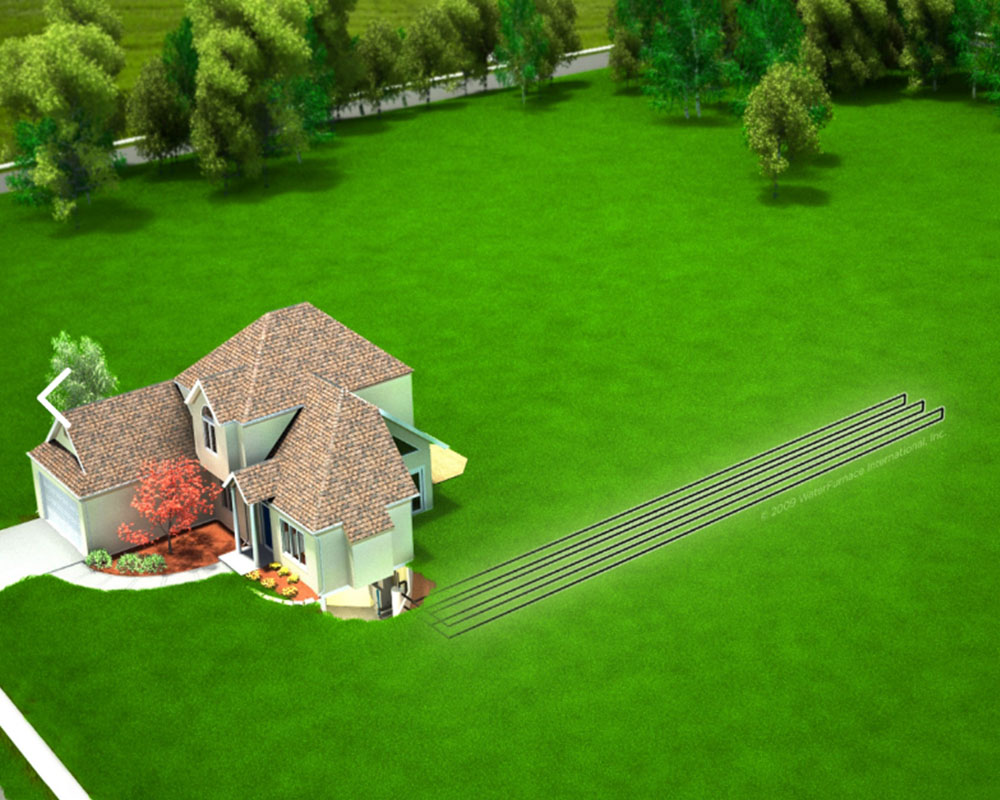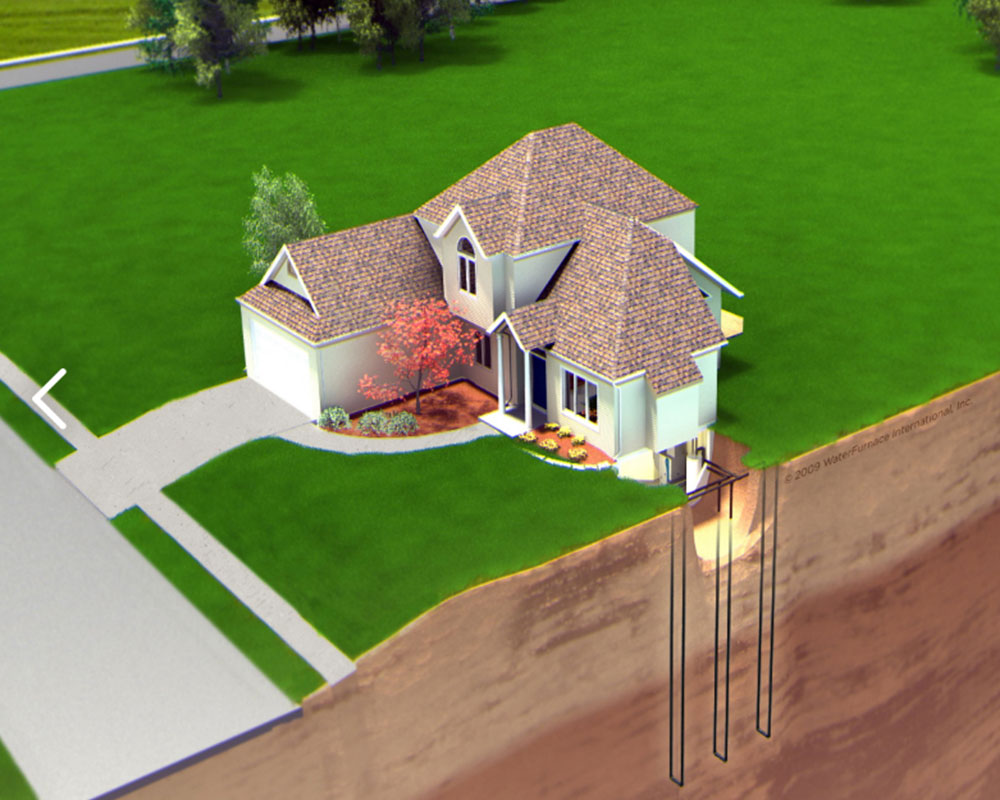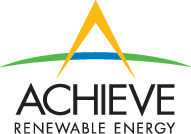Reach Your Energy Goals
Energy Goals are Our Specialty at Achieve
Reach your energy goals with a geothermal heat pump. It provides a greener, more efficient, and cost-effective heating & cooling system. It uses the renewable energy stored in ground at your property rather than burning fossil fuels. But what’s really impressive is the level of comfort it provides. Our systems operate for longer periods at lower speeds, making the home or business consistently comfortable all year round. You have to experience it to believe it.
Geothermal systems work for your home, business, and the environment
In your home, office, school or restaurant, a geothermal system provides a clean, effective way to deliver heat and cooling all year long.
- Geothermal for your home is a an efficient and clean solution
- Shared working spaces, offices, schools, and healthcare facilities are well suited for geothermal systems
- Restaurants, shops and manufacturing all can benefit from geothermal heating and cooling

Mother Nature's own climate control
No matter what climate you live in, the outdoor temperature throughout the year varies. For some climates that means blazing summers and cool to frigid winters. What many people don’t realize is that the temperature below 20 to 30 feet below ground stays fairly consistent all year (regardless of climate or season). While air temperatures can vary greatly from day to night or winter to summer, the temperature just a few feet below the earth’s surface stays an average 50°-70°F year-round. The ground is a thermal resource that you can harvest with our geothermal installation and provide heating, cooling and hot water for your home or business. This is why geothermal energy is so efficient all year long!
Geothermal energy goals by the numbers
We help decide what system is right for you to meet your energy goals
How you harvest the heating and cooling on your property depends on the needs of your home or business and the configuration of your property. As a leading geothermal contractor, Achieve has significant expertise in all designs for ground heat exchangers (GHE). We customize our designs to match your specific project. The GHE is used to move heat energy to and from your building. It’s the heart of a geothermal system and its biggest advantage over ordinary heat pumps, air conditioners and fossil fuel furnaces. The type of GHE is based on available space, Geology, and installation costs for specific areas.
We’re always here to answer your questions.
Open Loops


Horizontal Closed Loops
Vertical Closed Loops

Geo FAQ's energy goals you need to know
We have installed geothermal heating and cooling systems in New England for many years and we have answered many questions. Please review some common FAQ’s and if you would like to chat specifically about your needs, call us anytime. Let us help you reach your energy goals. We are glad to talk shop!
Even though the term heat pump may be unfamiliar, anyone with a refrigerator or an air conditioner has witnessed the operation of a heat pump. All of these machines, rather than making heat, take existing heat and move it from a lower-temperature location to a higher-temperature location. Refrigerators and air conditioners are heat pumps that remove heat from colder interior spaces to warmer exterior spaces for cooling purposes. Heat pumps also move heat from a low-temperature source to a high-temperature space for heating.
An air-source heat pump, for example, extracts heat from outdoor air and pumps it indoors. A geothermal heat pump works the same way, except that its heat source is the warmth of the earth. The process of elevating low-temperature heat to over 100° F and transferring it indoors involves a cycle of evaporation, compression, condensation and expansion. An Ozone-friendly refrigerant is used as the heat-transfer medium which circulates within the heat pump. The cycle starts as the cold liquid refrigerant passes through a heat exchanger (evaporator) and absorbs heat from the low-temperature source (fluid from the ground loop). The refrigerant evaporates as heat is absorbed.
The gaseous refrigerant then passes through a compressor where the refrigerant is pressurized, raising its temperature. The hot gas then circulates through a refrigerant-to-air heat exchange coil where heat is transfered and pumped into the building at about 100° F . When it loses the heat, the refrigerant changes back to a liquid. The liquid is cooled as it passes through an expansion valve and begins the process again. To work as an air conditioner, the system’s flow is reversed.
All heating and cooling systems have a rated efficiency from an independent certification board. Fossil fuel furnaces have a percentage efficiency rating. Natural gas, propane and fuel oil furnaces have efficiency ratings based on laboratory conditions. To get an accurate installed efficiency rating, factors such as flue gas heat losses and cycling losses caused by oversizing, blower fan electrical usage, etc., must be included.
Geothermal heat pumps, as well as all other types of heat pumps, have efficiencies rated according to their coefficient of performance or COP. It’s a scientific way of determining how much energy the system produces versus how much it uses. Most geothermal heat pump systems have COPs of 3.1-5.3 depending on the model and installation conditions. That means for every unit of energy used to power the system, 3.1-5.3 units are supplied as heat. Where a fossil fuel furnace may be 78-90 percent efficient, a geothermal heat pump is about 400 percent efficient. Some geothermal heat pump manufacturers and electric utilities use computers to accurately determine the operating efficiency of a system for your home or building.
Geothermal systems work with nature, not against it. They emit no Carbon Dioxide, Nitrous Oxide, or Sulfur Dioxide which have been linked to global warming, acid rain and other environmental hazards. The entire WaterFurnace product line uses R-410A, a performance-enhancing refrigerant that will not harm the earth’s ozone layer.

